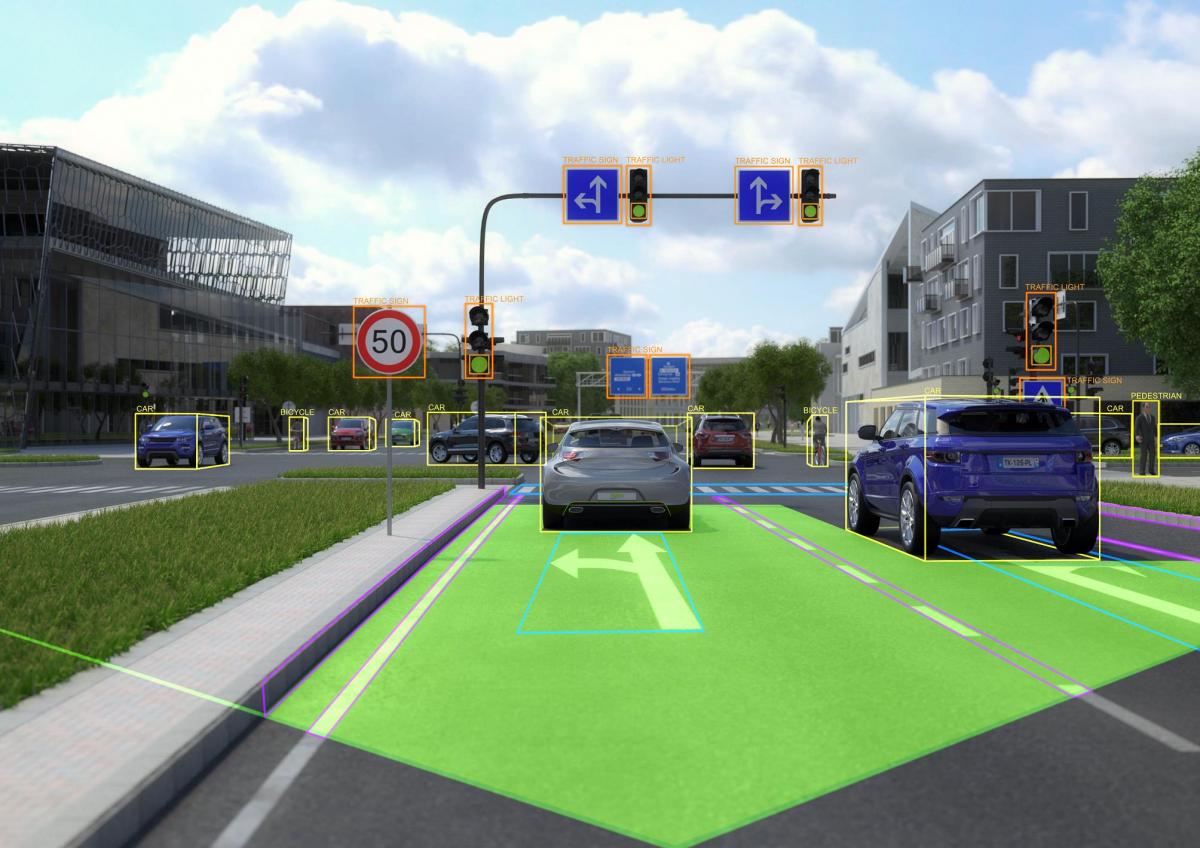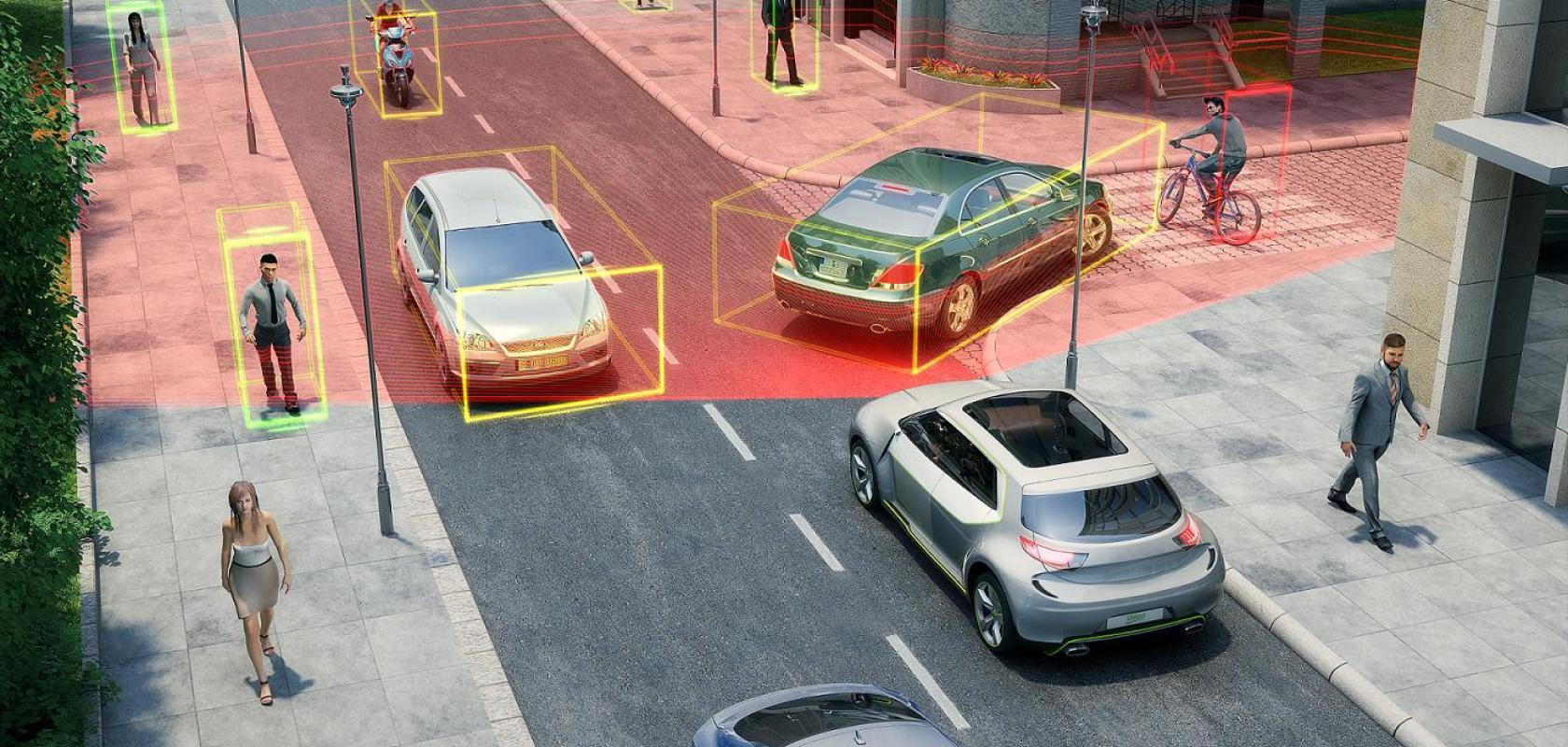Though many of us probably don’t know it, some drivers are already benefiting from the safety boost that lidar scanning technology offers. In 2017, German carmaker Audi reached this early checkpoint on the road to automated driving experiences, integrating lidar into its A8 model. To date, this lidar, from tier one French automotive part supplier Valeo, is the only such product qualified as safe to use in cars.
However, other lidar companies are also in the qualification process, noted Alexis Debray, technology and market analyst at industry research company Yole Développement. He cited the collaboration between German carmaker BMW, Canadian tier one part supplier Magna and Israel-based MEMS scanner lidar startup Innoviz. ‘They have a plan to integrate lidar in BMW cars in 2021. This is a big move, showing that lidar is coming to the automotive market.’ He also anticipated Volvo adopting lidar in 2020/2021.
Yole estimates that in 2018, the automotive lidar market was worth around $216 million. Another of its technology and market analysts, Pierrick Boulay, stressed that this is not just down to the Audi A8. Even though self-driving robotic cars are a rare sight on roads today, they already represent an important market. Such robotic cars should be fully autonomous, meeting SAE International’s highest standard of automation, at level 5.
No such vehicles have been successfully commercialised yet, but development models use up to eight lidar devices per car, Boulay explained, each being more expensive than the price expected for use in personal cars. He added: ‘Once they are commercialised, rather than being sold directly to consumers, robotic cars will be rented as a service, with the companies owning them doing regular maintenance to replace parts or upgrade performance. Yole also forecasts that by 2024 the automotive lidar market will reach $4.3 billion, expanding at a 64 per cent compound annual growth rate.
Yet, to deliver that requires optical components that can deliver lidar performance economically. As highlighted above, in the personal car market, price is one factor that currently limits lidar to just the premium A8 model. As costs fall for components, however, lidar will extend to more premium and mid-class cars, commented Laurent Demezet, key account manager, Hamamatsu Photonics France.
Lidar systems are often based on pulsed laser diodes and silicon avalanche photodiode (APD) arrays, with proven solutions exploiting 905nm wavelength light. But other options might include 1,550nm light, or continuous-wave illumination. Also, some lidars scan laser beams across the environment mechanically, while flash lidars have no moving parts, and illuminate their entire environments simultaneously. Companies seeking to exploit the industry’s explosive growth are therefore asking: How can systems be cheaper? And which are the optimal lidar solutions?
Falling component prices ‘will come in conjunction with the development of the artificial intelligence (AI) of the self-driving car software and fusion of multiple sensors, such as cameras, radar, lidar, and so on,’ Demezet said. Fully autonomous robotic vehicles will appear through taxi/shuttle-companies offering ‘mobility as a service’, with car manufacturers operating as sub-contractors to taxi companies. For them, full automotive qualification would be beneficial, but isn’t necessary as they would have regular maintenance regimes. ‘This has substantial arguments from a monetary standpoint, as it takes costs of maintaining and operating the vehicle from the user,’ Demezet noted.

The Valeo Scala is an automotive-qualified lidar product
Guillaume Devauchelle, vice president innovation and research at Valeo, agreed that lidar’s role is as one of multiple detection techniques to ensure safe object identification in autonomous vehicles. Combining advantages and drawbacks on the three different techniques should enable autonomous driving with fewer than one major incident per billion kilometres, he estimated.
Lidar as standard
‘The most effective combination so far is camera plus radar plus scanner lidar,’ Devauchelle continued. First, sensors have to recognise a scene, using semantic classification to identify objects like pedestrians, cars and traffic lights – cameras are the very best for this, Devauchelle noted. ‘But, if you consider detection range or ability to operate in adverse weather conditions, for sure the lidar scanner is far better,’ he added, expressing confidence that as so many companies are working on lidar, it will soon become standard. He added that safety regulations will also ultimately require lidar to supplement front cameras in cars.
Valeo’s first- and second-generation Scala lidars are scanners exploiting rotating mirrors, with four and 16 905nm laser sources respectively, rather than static flash systems. ‘Flash lidar only has 16 or so different spots, which is not enough, and flash lidars operate with limited power to avoid damaging eyes,’ Devauchelle said. By contrast, rotating mirrors offer large fields of view and good angular resolution, which has been boosted even further by increasing the number of laser sources. Valeo initially licenced its lidar technology from German firm Ibeo, which sold products for niche, low-volume applications. ‘We have completely redesigned the product to be an automotive-grade, as a safety device with a competitive cost far below €1,000,’ Devauchelle stressed.
Yet Valeo is now developing solid-state flash lidar technology for a third generation product. Devauchelle noted that the firm’s first and second generation products used established technology intentionally, to reduce the commercialisation challenge. ‘A rotating mirror with precision mechanics was available,’ he said. ‘Selecting the right diodes for imaging, the right receivers, the right data processing, was already quite challenging. The result is that, for the time being, we are the only one that has been qualified for automotive applications. We have produced 100,000 parts so far. We’re still not sure that solid state will replace the rotating mirror quickly, that it will be more economical or easier, but we’ll see.’
Scott Barrie, sales engineer at Hamamatsu Photonics UK, is familiar with the kind of concerns Devauchelle raised. ‘Two major points are important for automotive customers: reliability and low cost,’ he said. Japan-headquartered Hamamatsu Photonics develops and manufactures all constituent parts of lidar systems in-house. ‘Full control over the process allows Hamamatsu to offer the highest level of precision,’ Barrie asserted. ‘Hamamatsu has also invested heavily in infrastructure for production capacity at high volumes, allowing us to offer low-cost sensors.’
For example, Hamamatsu produces the main options of silicon photodiodes that detect at 905nm, including APDs, silicon photomultipliers (SiPMs) and single-photon avalanche diodes (SPADs). It also offers InGaAs detectors that can detect 1,550nm laser light. ‘Currently, APD arrays used with an amplifier array are the most demanded by the market,’ Barrie said. Hamamatsu offers all detector options in automotive qualified form, and they can be integrated onto various packages and with the associated integrated circuits.
The company also provides 905nm edge-emitting pulsed laser diodes, either individually as bare chips, in conventional bullet type or cheap and temperature-resilient surface ceramic packaging, or stacked together. ‘We have more than 70 different companies using our components in 70 different solutions,’ Demezet underlined.
Such components attract providers initially targeting self-driving robotic vehicles, and therefore whose products do not need full automotive qualification, such as Robosense, a developer based in Shenzhen, China. The company’s RS-Lidar-M1 system moves away from large-scale mechanical scanners, instead implementing MEMS reflectors in solid-state lidar. The core 2D MEMS micro-mirror technology combines with a low-cost 905nm light source and ‘a variety of breakthrough opto-mechanical systems and signal processing technologies’ according to vice president of R&D, Leilei Shinohara. It therefore achieves 200m measurement range, and a 120° field of view. ‘The new solid-state lidar system is stable, reliable, low-cost, easy to mass-produce, and easy to embed in the car body,’ he said.
Having established this offering, Robosense is now launching automotive-grade products in order to reach higher production volumes. ‘For mass production of autonomous driving, lidar’s supply capacity, cost and reliability need to meet the requirements of automotive products,’ Shinohara said. ‘The components selected for lidar must also meet such requirements – otherwise lidar products cannot truly enter mass production. In the industry chain, 905nm laser technology can meet such needs.’ Similarly, the company uses APDs as its detectors, thanks to their ‘mature supply chain, reasonable cost, relatively high sensitivity and fast response’.
In targeting autonomous driving, Robosense also has its own AI algorithm to detect obstacles from the ‘3D point cloud’ of location data that lidar creates. The algorithm ‘uses deep learning and incorporates the advantages of traditional algorithms’, Shinohara noted. It is embedded in chips in its systems and enables direct output of detected, tracked and classified obstacle information. The algorithm has allowed RS-Lidar-M1 to reach car makers’ requirements for level 3 automatic driving, such as enabling safe driving in traffic jams and on highways in high-speed road conditions, he added.
Fully-automated vehicles will be the fastest-growing automotive use of lidar in Robosense’s view. ‘We think large-scale application of lidar in the robot field may be earlier than the large-scale application of lidar in the automatic driving field – it will start in the next few years,’ Shinohara said. In preparation, the company is ‘constantly stepping up co-operation’ with carmakers and part suppliers. ‘Performance can always be better, but what the market really wants is to achieve a more reasonable price, more stable and reliable products, while meeting customer needs,’ he concluded.
Moore’s law of the road
Solid-state lidar startup Lumotive’s CEO Bill Colleran agrees that there is a key need for affordable performance sufficient to enable autonomous vehicles. ‘Significant effort by several vendors will likely make such units available in the next two years or so,’ he said. Then, to enable further adoption, he believes software must reach the threshold of true autonomy; initially in constrained environments, with regulators providing guidance to free fleet operators to offer services subject to appropriate constraints, that ensure safe operation.
In this context, Lumotive differentiates itself with an alternative beam-steering approach to the existing ones that rotate mirrors or entire lidar systems. ‘Lumotive’s beam steering system leverages Liquid Crystal Metasurfaces (LCMs), which control the direction of both the transmitted and received laser pulses to scan the system’s field of view,’ Colleran explained.
‘LCM-based beam steering is completely solid state and exhibits several advantages compared to mechanical approaches.’ Among those advantages, he continued, are high performance. This is measured by range, resolution and frame rate. For such high performance, lidar systems require a large optical aperture. ‘Lumotive’s beam steering is very fast while still having large aperture,’ he explained.
Like Valeo and Robosense, Lumotive uses time-of-flight (TOF) ranging to help commercial viability. TOF simply determines distances to objects by measuring the time it takes laser light to reach the object, then scatter and return to the lidar detectors. ‘This approach is the simplest architecture that can deliver the performance required for autonomous vehicles,’ Colleran said. Another approach, frequency-modulated continuous wave (FMCW), can be up to 100 times more sensitive than TOF approaches. ‘LCM-based beam steering can support any range-finding method, so as complex approaches like FMCW become more affordable, our system can be upgraded cost-effectively.’
Lumotive uses common 905nm lasers, but exploits less common SPADs, which, Colleran said, ‘provide the highest gain of any available detector technology’. He highlighted that these silicon CMOS-based devices bring manufacturing advantages, potentially combining the detectors ‘with complex receiver electronics to provide an extremely efficient integrated circuit in terms of cost and power’. Such capabilities mean that lidar systems will improve greatly in performance over the next few years, while decreasing in size and cost, Colleran predicted. ‘All-silicon approaches that benefit from Moore’s Law will improve more rapidly than architectures which use mechanical beam steering or more exotic semiconductors,’ he explained.
Yole’s Debray agreed that such operational matters are among the most important for the next leg of automotive lidar’s transformative journey. ‘It’s a challenge to actually develop the technology, something reliable that works properly,’ he said. ‘Another challenge is to build an industry to actually manufacture the many lidars that we need for all of the vehicles. If everything goes well, this technology will become much cheaper. It was a few thousand dollars, but it will be a few hundred.’
That’s significant, because lidar is still an emerging technology, Debray added, even if most robotic cars use it. ‘In the next few years we should see lidar working together with cameras to improve the autonomy level and safety of more cars,’ he concluded. EO


